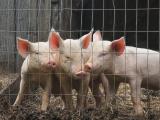Jul 1, 2010
US may destroy 43% of H1N1 vaccine
About 40 million doses of H1N1 vaccine worth $260 million have expired and will be destroyed, and 30 million more will expire later and may also be tossed, according to an Associated Press (AP) story. This would amount to more than 43% of all US vaccine made. "Although there were many doses of vaccine that went unused, it was much more appropriate to have been prepared for the worst-case scenario than to have had too few doses," said Bill Hall of the Department of Health and Human Services.
http://www.chicagotribune.com/health/sns-ap-us-med-swine-flu-vaccine,0,5741086.story
Jul 1 AP story
New Zealand sees rise in flu activity
New Zealand is seeing gradually increasing flu activity to a level typically seen at this time of year, its Ministry of Health (MOH) reported today in its weekly update. Although the country is still below the baseline influenza level for flu season, it is experiencing pandemic H1N1 flu in communities and offering free vaccine to all those in at-risk groups. Of the influenza viruses typed, most are pandemic H1N1, with some seasonal H3N2.
http://www.surv.esr.cri.nz/PDF_surveillance/Virology/FluWeekRpt/2010/FluWeekRpt201025.pdf
Jul 1 New Zealand MOH update
Study highlights first cases in Britain
A study today in Epidemiology and Infection detailed 392 of the first UK pandemic H1N1 cases, including 14 patients who were hospitalized, 3 on mechanical ventilation. Patients were young (median age 15 years) and symptoms were similar to seasonal flu, except that 27% had diarrhea. Also, 11% had an underlying condition, similar to the general population, and 92% received antiviral drugs. The study found that the antivirals shortened the course of illness from 9 to 5 days.
http://dx.doi.org/10.1017/S0950268810001366
Jul 1 Epidemiol Infect abstract
Study tracks pandemic H1N1 adaptation in mammals
To explore how novel viruses adapt to mammals, a team from Russia and St Jude's Children's Research Hospital in Memphis performed a series of genetic experiments on mice with pandemic H1N1 viruses, which isn't lethal to the animals. They published their findings in the Journal of Virology. They found that changes in receptor specificity and interaction of viral polymerase components with host cell factors are the major modulators of virulence that shaped early evolution of novel H1N1.
http://jvi.asm.org/cgi/content/short/JVI.00159-10v1?rss=1
Jun 30 J Virol abstract


















